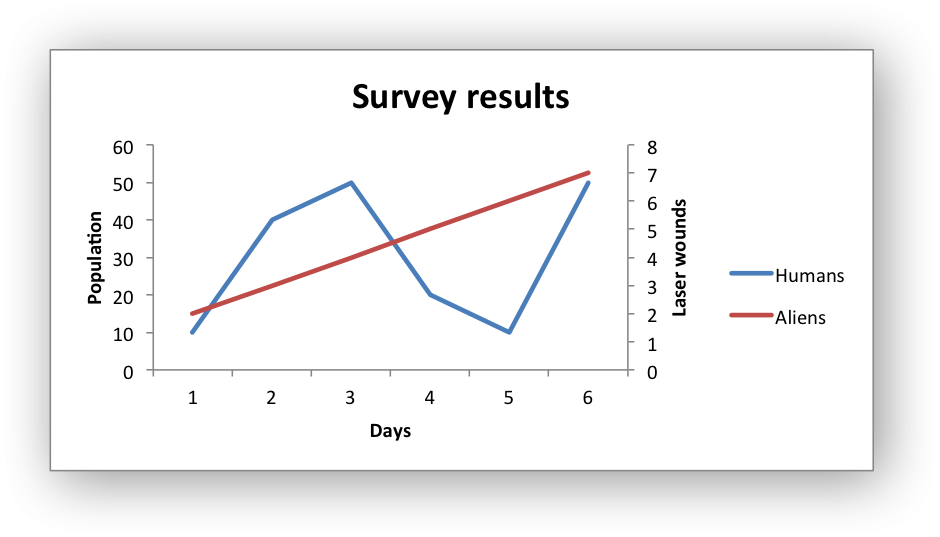Example: Secondary Axis Chart#
Example of creating an Excel Line chart with a secondary axis. Note, the primary and secondary chart type are the same. The next example shows a secondary chart of a different type.

#######################################################################
#
# An example of creating an Excel Line chart with a secondary axis
# using Python and XlsxWriter.
#
# SPDX-License-Identifier: BSD-2-Clause
# Copyright 2013-2024, John McNamara, jmcnamara@cpan.org
#
import xlsxwriter
workbook = xlsxwriter.Workbook("chart_secondary_axis.xlsx")
worksheet = workbook.add_worksheet()
bold = workbook.add_format({"bold": 1})
# Add the worksheet data that the charts will refer to.
headings = ["Aliens", "Humans"]
data = [
[2, 3, 4, 5, 6, 7],
[10, 40, 50, 20, 10, 50],
]
worksheet.write_row("A1", headings, bold)
worksheet.write_column("A2", data[0])
worksheet.write_column("B2", data[1])
# Create a new chart object. In this case an embedded chart.
chart = workbook.add_chart({"type": "line"})
# Configure a series with a secondary axis
chart.add_series(
{
"name": "=Sheet1!$A$1",
"values": "=Sheet1!$A$2:$A$7",
"y2_axis": 1,
}
)
chart.add_series(
{
"name": "=Sheet1!$B$1",
"values": "=Sheet1!$B$2:$B$7",
}
)
chart.set_legend({"position": "right"})
# Add a chart title and some axis labels.
chart.set_title({"name": "Survey results"})
chart.set_x_axis(
{
"name": "Days",
}
)
chart.set_y_axis({"name": "Population", "major_gridlines": {"visible": 0}})
chart.set_y2_axis({"name": "Laser wounds"})
# Insert the chart into the worksheet (with an offset).
worksheet.insert_chart("D2", chart, {"x_offset": 25, "y_offset": 10})
workbook.close()